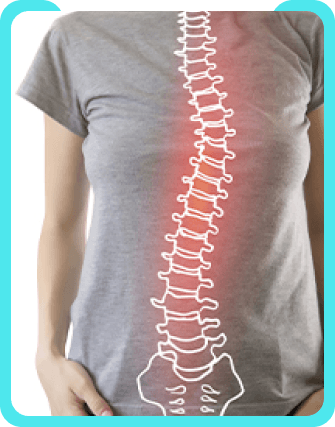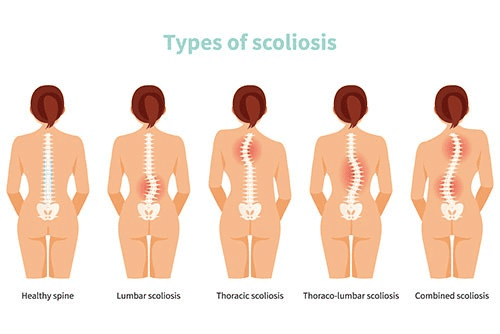
Scoliosis
- Home
- Conditions
- Back & Spine Conditions
- Scoliosis
Scoliosis is an abnormal curvature of the spine. The normal shape of a person’s spine includes a curve at the top of the shoulder and a curve at the lower back. If your spine is curved from side to side or in an “S” or “C” shape, you might have scoliosis. There is a normal spinal curve when looking from the side, but the spine should appear straight when looking from the front. Kyphosis is a curve in the spine seen from the side in which the spine is bent forward. There is a normal kyphosis in the middle (thoracic) spine. Lordosis is a curve seen from the side in which the spine is bent backward. There is a normal lordosis in the upper (cervical) spine and the lower spine or lumbar spine. People with scoliosis develop additional curves to either side of the body, and the bones of the spine twist on each other, forming a C or an S-shaped or scoliosis curve in the spine. Scoliosis ranges from 10-20 degrees (mild), 20-50 degrees (moderate), and severe (greater than 50 degrees).
Types of Scoliosis

The main causes of Scoliosis are:
Congenital – Scoliosis is present at birth
Neuromuscular – Scoliosis is caused by muscle weakness, paralysis, or disease
Idiopathic – The cause of Scoliosis is unknown.
FAQ'S
Symptoms vary depending on the degree of scoliosis. Common symptoms associated with scoliosis include:
- one shoulder blade that’s higher than the other
- one shoulder blade that sticks out more than the other
- uneven hips
- a rotating spine
- problems breathing because of reduced area in the chest for lungs to expand
Treatment for Scoliosis at Alleviate includes personalized treatment plans designed by our expert staff. Early detection of Scoliosis is important to help monitor the curvature during growth, to make sure it does not worsen. Scoliosis treatment may include Physical Therapy, stabilization, pain management, or surgery in severe cases.
The first step in treating Scoliosis is to make an appointment to see a Spine Specialist for a Scoliosis diagnosis and to learn your Scoliosis treatment options.
Video Spotlight
Blog
Surgery-Free Solutions
Expert Tips for Pain Management
Testimonials
Words From Our Patients
I’ve had my pain management treatment for low back sciatic pain from Alleviate Jayanagar, I’m recovering well and coming out of pain. Thanks to Dr. Wiquar Ahmed for taking necessary steps and making us understand the underlying issues and also for being helpful and supportive. I also thank Dr. Rijo for helping in physiotherapy. Thanks to Swarna for being very reachable and co-operative throughout.
GOPALAKRISHNA from Nelamangala suffering from low back pain. Visited alleviate pain management hospital in dasarahalli .consulted dr wiqqar Ahmed and he explained the problem of lower back pain and suggested for physiotherapy and now I am feeling better
consulted for my Aunty Sumitra with Dr Swagatesh in Alleviate Dasarahalli clinic for sever low back pain doctor explained procedure and done ..After that with Dr.chaithra she took physiotherapy after her treatment she very happy and she is very good now..Thank u Alleviate
Dr wiquar ahmed treated me, he dioganised my left theigh and leg pain, he was advising politely and friendly atmosphere, Injucted effected lower spinal disc very carefully. I wish for his most success in career and devolopment of all alliviate pain management hospital to treat all pain persons. Physiotheraphy sect io n and reception sections are having good staff. all are very polite and good behaviour persons. Once again i an all staff. Thanks to all.






